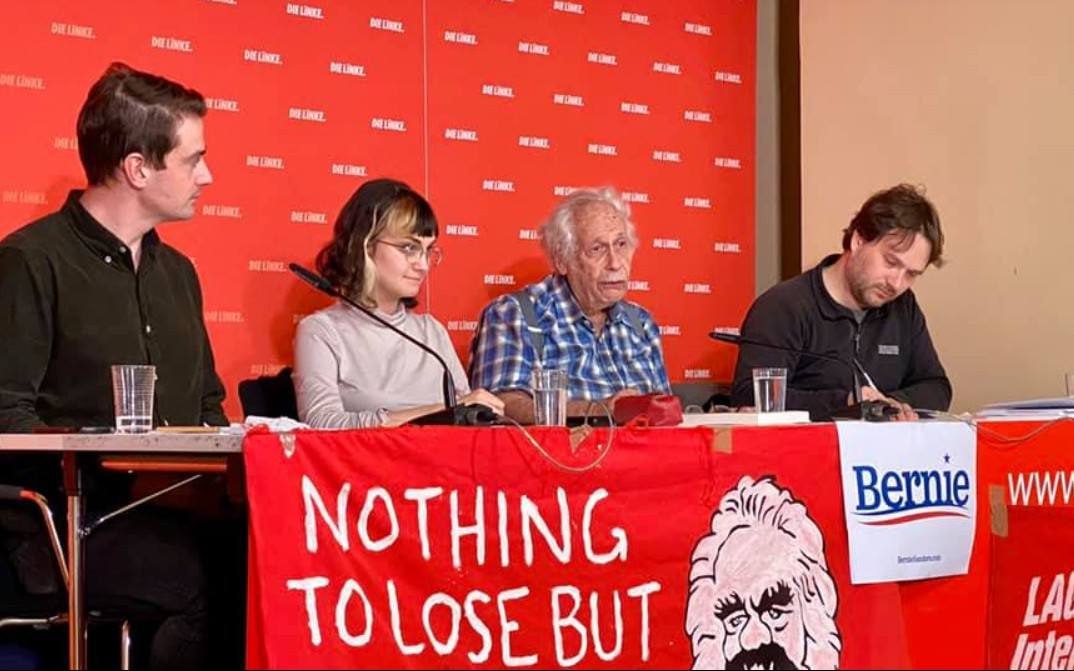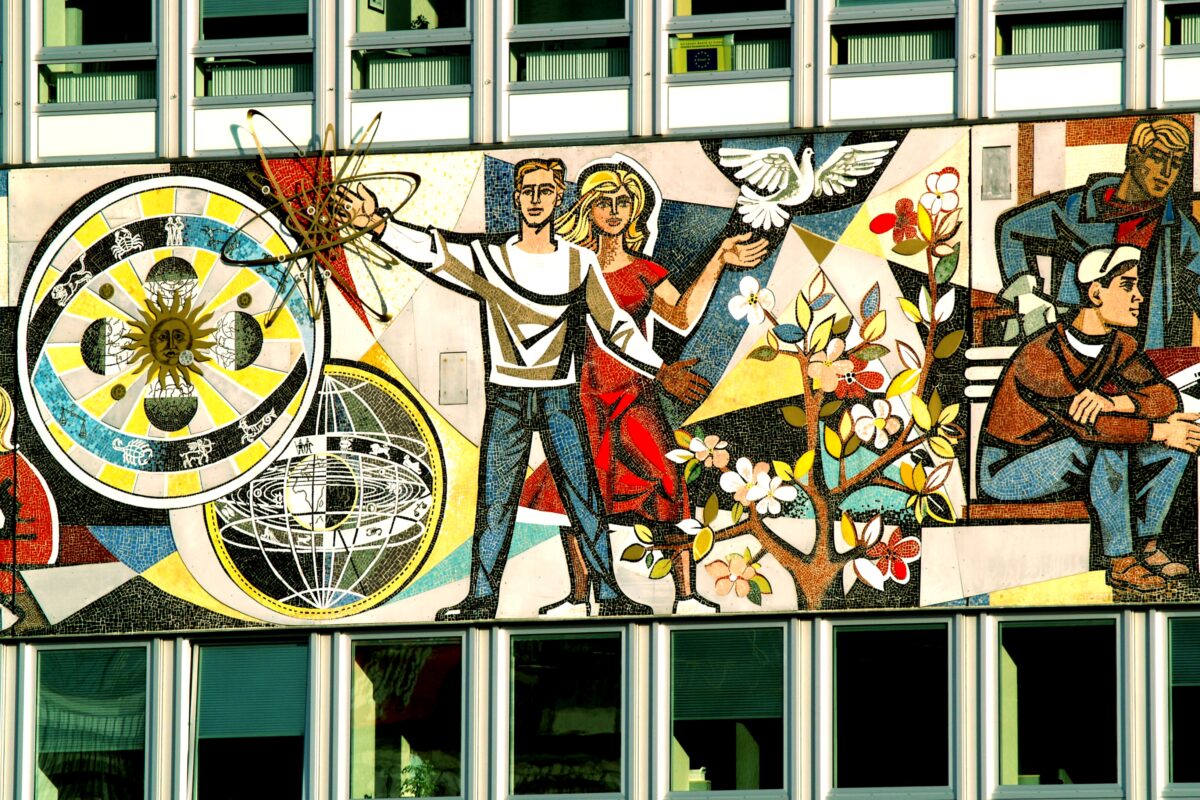Rebellious Daughters of History #8
by Judy Cox

Louise Otto Peters (1815-1895): ‘The Lace-makers’ (1840)
Born in March 1819 to a middle-class family, Louise Otto-Peters was educated at home by a radical father. After his death, she established herself as a writer to support herself and her sisters, publishing volumes of socially committed novels and poems.
Her 1845 book, Schloss und Fabrik (Castle and Factory), was influenced by Frederick Engels’ ‘Condition of the British Working Classes’ and explores the possibility of women’s freedom. The work was censored by the German government because it exposed treatment of both male and female factory workers. It was not published in full until 1989.
Otto-Peters moved to Leipzig in 1848, where she participated in 1848 Revolution, becoming known as ‘The Red Democrat’. In 1849 she founded the Frauen-Zeitung, a newspaper devoted to women’s issues, the papers motto was: ‘Female Citizens in the Republic of Liberty’. The government of Saxony introduced a law to stop women editing newspapers known as the the ‘Otto Law’.
In 1858 Louise Otto Peters married the writer and journalist August Peters. The couple had fallen in love during the 1848 revolution but Peters served seven years in prison because of his activism. In October 1865, Louise Otto-Peters helped to establish the General German Women’s Association which campaigned for economic and political rights for women.
The next German women to edit a paper was Clara Zetkin in 1891. Zetkin paid this tribute to Otto-Peters: ‘she wanted to put into practice the dream she had in the 1849s: full equality for her sex; full equality for workers’ Zetkin will be tomorrow’s rebellious woman.
The Lace-Makers (1840)
See the women making lace
Pallid cheeks and eyes so red!
Tired out, and all for nothing,
Nothing but the coarsest bread!
Grandma’s eyes are blinded now,
Only death will set her free,
Wringing hands, she quietly prays:
God help us in extremity.
The children move their little hands,
Up and down the bobbins fling.
Toil and trouble without end
Is what their future life will bring.
God protect each little Miss
Who nothing knows of youthful zest –
For poverty embraces all;
Want snuggles into every breast.
See the women making lace,
Pillow lace, a work of art;
Rich and famous – do not scruples
Linger in your inner heart?
While they decline, you feast and spend,
And savour life in luxury,
Meanwhile these women starve and die,
Released, at last from misery!
See the women making lace
Is not your faith hypocrisy?
All their belief extinguished now,
They call your faith apostasy!
See the woman making lace,
Have you no mercy for her plight?
For else your final waking hour
Will reap her curse from pain and blight!

Clara Zetkin (1857-1933): , revolutionary socialist
Clara Eissner, the daughter of a schoolteacher was born in Saxony, on 5th July, 1857. When the Social Democratic Party (SDP) was formed in 1875, Clara joined. In 1878 Otto von Bismarck introduced the anti-socialist law which banned SDP meetings and publications so Clara left Germany for to live in exile in Zurich and Paris.
Clara married Ossip Zetkin, a Russian revolutionary who was also living in exile. Ossip was a carpenter and a Marxist. In 1883, her son Maxim, was born, followed by Kostya in 1885. In Paris Clara and Ossip became members of the international socialist group which discussed Marxist theory.
Ossip Zetkin died of tuberculosis in January, 1889. Clara continued with her political campaigns and supporting women workers in their demand for higher wages. When the anti-socialist laws were lifted in 1890, Zetkin returned to Germany. Membership of the SDP grew rapidly.
In 1891 Clara Zetkin became editor of the SPD’s journal, Die Gleichheit (Equality). Zetkin took the circulation from 11,000 in 1903 to 67,000. Zetkin changed her views on women’s suffrage, which she had dismissed as a middle-class movement, and helped to organize the first International Conference of Socialist Women in Struttgart.
Clara Zetkin initiated International Women’s Day in 1910 at an International Conference of Working Women in Copenhagen.
Clara campaigned with Rosa Luxemburg and Karl Liebknecht against the right wing of the party. This fight came to a head when war broke out on 4th August, 1914. While the leaders of the socialists parties across Europe collapsed into nationalism, Clara Zetkin, Rosa Luxemburg and Karl Liebknecht were among a tiny group of socialists who opposed the war as an imperialist war.
As anger against the horrors of war began to grow, Zetkin used her position as editor of the Die Gleichheit (Equality) and as Secretary of the Women’s Secretariat of the Socialist International to campaign for the anti-war movement at international conferences
The left began to organise this growing anger against the war. They set up the Spartacus League which initiated demonstrations and argued that socialists should turn this nationalist conflict into a revolutionary war.
On 28th June 1916, Liebknecht was arrested 55,000 munitions workers went on strike. The government responded by arresting trade union leaders and conscripting them into the Army. In April 1917 Clara Zetkin joined other left-wing members of the Social Democratic Party (SDP) formed the Independent Social Democratic Party (USPD).
The German revolution began with a naval mutiny in November. By the evening of 4th November, Kiel was firmly in the hands of about 40,000 rebellious sailors, soldiers and workers. By the 8th November, workers councils sprang up in every major town and city in Germany.
The leaders of the Social Democratic Party were now in government and rushed to deflect the revolution. They set up a provisional government and announced elections to a constitutional assembly would be held.
On the 5th January, Frederich Ebert called in the German Army and the Freikorps to bring an end to the uprising in Berlin. By January, 1919 the rebellion had been crushed and most of its leaders were arrested. Rosa Luxemburg and Karl Liebknecht, who refused to flee the city, and were captured on 16th January and taken to the Freikorps headquarters and murdered.
Clara was devastated by the death of her great friends and comrades but continued to fight. She was elected to the new Constituent Assembly. On 29th January 1919, she was the first woman to speak in a German parliament. In the speech she delivered an attack on Friedrich Ebert.
In January, 1919 the Spartacus League changed its name to the German Communist Party (KPD). Clara Zetkin joined served on the Central Committee of the KPD. She was also appointed to the executive committee of Comintern.
A life-long anti-racist, Zetkin took part in the international protests against Jim Crow laws in the United States. She also campaigned against the conviction of the Scotsboro Boys.
In 1932, Zetkin, although seventy-five years old, was once again elected to the Reichstag. In her speech, she denounced the Nazi Party. Clara Zetkin died on 20th June, 1933.



